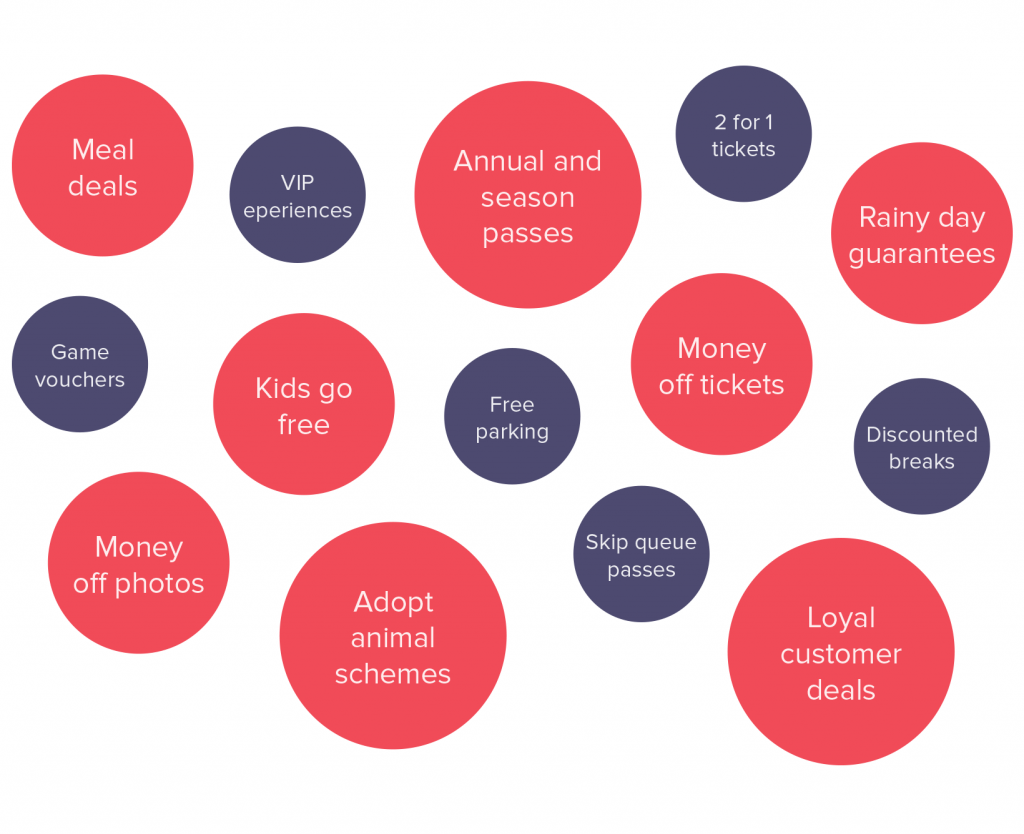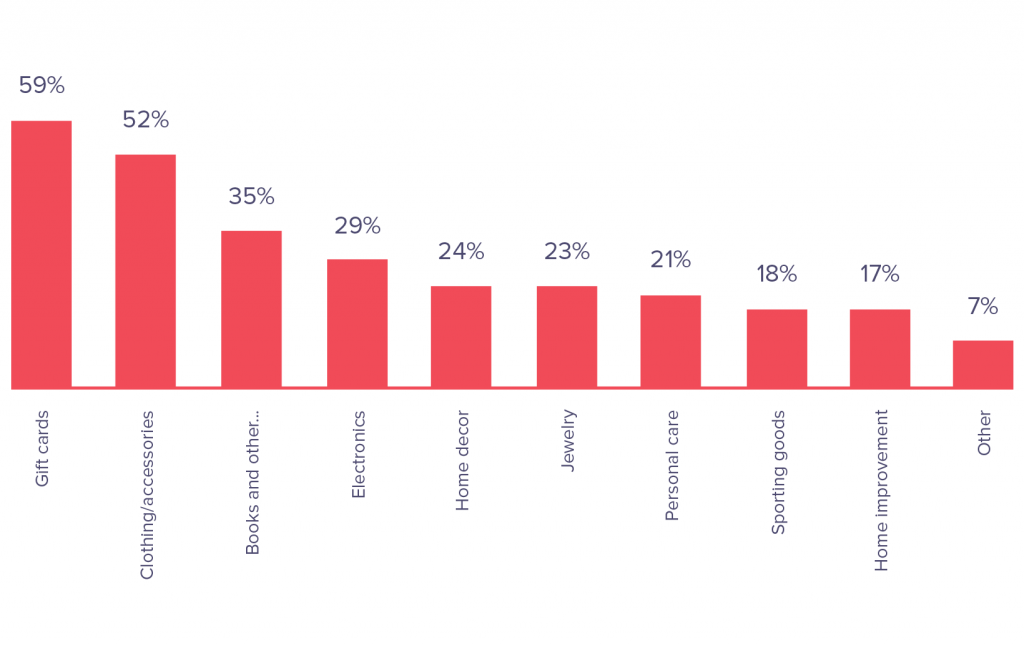Promotions are an effective way to raise your attraction’s profile, target audiences outside your local area, push specific experiences and boost visitor numbers during quiet off-seasons.
They can be split into two categories – discount promotions and bonus promotions. In many cases, the difference lies in the delivery.
For example, imagine you’re trying to sell more annual passes. You can either offer to reduce the price (discount) or add something of value (bonus):
Discount promotion – Buy an annual pass today and get 20% off
Bonus promotion – Buy an annual pass today and receive two months of membership
As you can see, they’re effectively offering the same thing – but there is research to suggest bonus promotions are more effective because they generate positivity and feelings of abundance rather than scarcity.
However, before you decide on wording, you need to find out what your visitors actually want.
In this article, you’ll learn how to use promotions to raise your attraction’s profile, target audiences outside your local area, push specific experiences and boost visitor numbers during quiet off-seasons. We also run through the types of offers that add value to a guest’s existing purchase, upselling, cross-selling, how to approach partnerships and gift certificates.
Research your market and create buyer personas
To develop a targeted and successful promotion strategy, you must define your audience, which means identifying your guests’ ages, locations,
personal interests and buying habits.
- Are people more likely to visit alone, in a couple or with friends
- and family?
- What are your guests’ pain points, and what do they think could be improved?
- What offers and experiences sell the best?
- How do your guests prefer to be contacted?
There are plenty of ways to collect the answers – the easiest is through in-house or digital surveys.
Create paper surveys and leave them at key areas throughout the attraction, set-up surveys on iPads or use SurveyMonkey. With online surveys, promote them on your website, social media channels and newsletters. For an added incentive, enter respondents into a prize draw for free tickets.
Once you’ve defined your buyer personas (families with children under five, adventure lovers, bargain hunters), you can create tailored and irresistible promotions for each group.
Focus on offers that add value to a guest’s existing purchase
Research shows people are more likely to spend extra cash when they’re already making a purchase, which means it’s in your interest to create as many additional buying opportunities on the booking journey as possible.
Two ways to do this are through upselling and cross-selling.
What’s the difference between upselling and cross-selling?
These terms are sometimes used interchangeably but there are notable differences.
Upselling is basically an upgrade – it’s suggesting a product or experience that would make the original purchase more premium and, therefore, more expensive. For example, if a guest purchases a ticket for your theme park, you might try and upsell them a VIP ticket.
In contrast, cross-selling encourages the purchase of complementary products. So, if a guest purchases a ticket to your theme park, you may try to sell them a ticket to your nearby water park. Although the products aren’t the same, you can assume the guest might have an interest in a similar experience.
Unsurprisingly, upselling tends to be more effective because it focuses on making an existing purchase even better, while cross-selling might promote something unrelated (taking the example above, your guest might love rollercoasters but have an irreparable fear of water).
That being said, they’re both powerful practices. When Amazon introduced upselling and cross-selling in the form of product recommendations and the “frequently bought together” panels, it saw an impressive 29% increase in sales.
When and where should you upsell and cross-sell?
If you bombard guests with promotions as soon as they land on your website, you will drive them away in droves.
First, you have to set the scene – let customers browse through your content and see the value of the experiences and products you offer. Once you’ve convinced them of your worth (through compelling copy, imaginative images and videos that bring the visitor experience to life – reference chapter 5 for more details), they’ll be more receptive to promotional messages.
It’s best to position upselling and cross-selling within the booking journey itself, once guests have already committed to making a purchase. However, there are a few other effective places. Let’s take a look at your options…
- Experience pages – cross-sell by showing related experiences within your attraction, or similar experiences at your other venues
- Shopping cart – promote products or experiences that help guests get more value from their purchase
- “Book tickets” page – if someone’s booking a day ticket, you could recommend monthly or annual passes instead
- Dedicated “enhance your experience” page – some attractions have an extra step on the booking journey, totally dedicated to upselling items that would make a person’s visit even better
And don’t forget your visitors who aren’t as digitally-savvy! Think of ways you can upsell and cross-sell at your physical venue or through more traditional marketing methods – provide training for retail staff, create catalogues or offer leaflets and stick promotional posters in prominent places.
What should you upsell and cross-sell?
Here’s where your research comes in handy because you need to create offers that people find valuable. Start by thinking of your buyer personas and who’s visiting your attraction.
- Families with small children will love discounted parking and meals deals.
- If you have lots of repeat visits, offer annual passes and build a digital annual pass system
- Do you receive international guests? If so, you could offer discounted overnight stays at your attraction or set up partnerships with nearby accommodation providers.
It’s best to tailor your promotions, but if you’re stuck here are some general ideas…

Use the power of Digital Gifting
The popularity of gift certificates or digital gift cards rises year on year. According to a First Data survey, consumers love to give gift cards more than any other gift.
What’s on shoppers’ wish lists this year

For the 13th year in a row (as of Oct 2019), gift cards remain the most popular items on shoppers’ wish lists. But why is that?
It boils down to consumers realising their value and seeing the benefits, which include:
- They can be sent instantly to a friend or family member
- Purchasing is more convenient, you can buy them digitally anywhere, anytime
- They can be more personal
- They can be gifted and easily sent to friends or family who live far away
- Virtual gift cards can’t be lost
The option to purchase a digital e-card for a visitor attraction is even more powerful for consumers. It allows them to gift experiences or you could say gift memories.
It’s widely agreed that positive experiences lead to happier lives. A 20-year study conducted by Dr. Thomas Gilovich, a psychology professor at Cornell University, made the following conclusion:
“Our experiences are a bigger part of ourselves than our material goods. You can really like your material stuff. You can even think that part of your identity is connected to those things, but nonetheless, they remain separate from you. In contrast, your experiences really are part of you. We are the sum total of our experiences.”
This research proves what we all know deep down, material things can’t provide true happiness, but experiences can. This is exactly why consumers are purchasing more gift certificates.
The benefits for visitor attractions who sell gift cards
There are also additional benefits for attractions who sell virtual gift cards:
- Additional profit. Customers typically spend more than the value of the card and stats show that 20% of gift cards go unredeemed. They’re also paid for upfront, possibly months before they attend
- Build brand awareness
- Can be the starting point of engaging new customers
- Cost less than traditional printed cards
- Are a lot easier to process and generate user data
- A great marketing tool, e.g. given away as prizes
How should gift certificates work for visitor attractions?
The solution you use for gift certificates depends on which platform your website is built on and your requirements. There are many plugins available if your site is built on the WordPress CMS, and also many third-party systems on the market if built on a different CMS.
Be aware. Whatever solution you choose, if you want your customers to gift ‘experiences’, then you need to make sure that the solution caters for that method.
An experience gift certificate allows the consumer to purchase something for its actual value (e.g. a distillery tour that costs £20), rather than having a gift voucher that has a monetary value of £20. The redemption process for the recipient is easier and should follow these steps:
- Who should receive the gift (usually a name, email address or phone number)
- A message for the recipient of the gift
- A date for when the recipient should receive it (useful for birthday gifts)
The recipient receives the email (or text) which includes the message, instructions for how to redeem the gift and, a link to redeem it. A great online system should only task the recipient with having to add their personal details via the website’s checkout, without having to make payment.
Partnerships – create joint promotions to supercharge what you already offer
Explore opportunities to develop joint promotional packages with other local attractions – this will help you cross-sell to new audiences and supercharge what you already offer.
Here are three effective ways to approach partnerships.
- Find service providers who fill in the gaps. For example, if you’re a small to midsize museum, you might not have a restaurant or cafe on-site. So, to broaden the experience you offer, contact a local restaurant and create a package where guests receive tickets and money off a two-course meal.
- Follow a theme – if you run a wildlife museum, partner with a nearby zoo. You know your guests already have an interest in animals, so it’s a pretty safe strategy.
- Do you receive a lot of international tourists or non-local visitors? They’re holidaymakers – they stay, at the very least, overnight and love travel itineraries. In this case, you could partner with any local attraction on the basis that tourists want to explore everything the area has to offer.
If that sounds like hard work, consider the use of voucher sites
Forming partnerships can be a lengthy process, and smaller attractions may lack the time and resources to build those relationships. In this case, you could use third-party voucher sites, such as Virgin Experience Days and Not On The High Street.
These kinds of experience companies do most of the leg work – they create the packages, arrange the marketing and draw up terms and conditions based on the information you provide. While it’s a lot less hassle for you, remember there will be less overall profit.
Conclusion
Now you know all about powerful promotions and how to use them to add value to a guest’s purchase.
Creating compelling offers comes down to understanding your guests and giving them what they want. Obviously, you benefit too, but at the heart of it, you’re trying to enhance the visitor experience (not all superheroes wear capes).
Use discount and bonus promotions, upselling, cross-selling and partnerships to create experiences and offers guests can’t find anywhere else. It’s what’ll make you stand out – the differentiator between your attraction and the one next door.
If you need help creating a promotional strategy, building promo code functionality and creating gift certificates, get in touch with us today and see how we can help.
Photo by Kira auf der Heide on Unsplash

Related articles
Digital
4 simple UX strategies for a better online user journey
Digital
7 proven tips for capturing quality leads from your website
Visitor Attractions
3 things visitor attractions should focus on during the Covid-19 pandemic